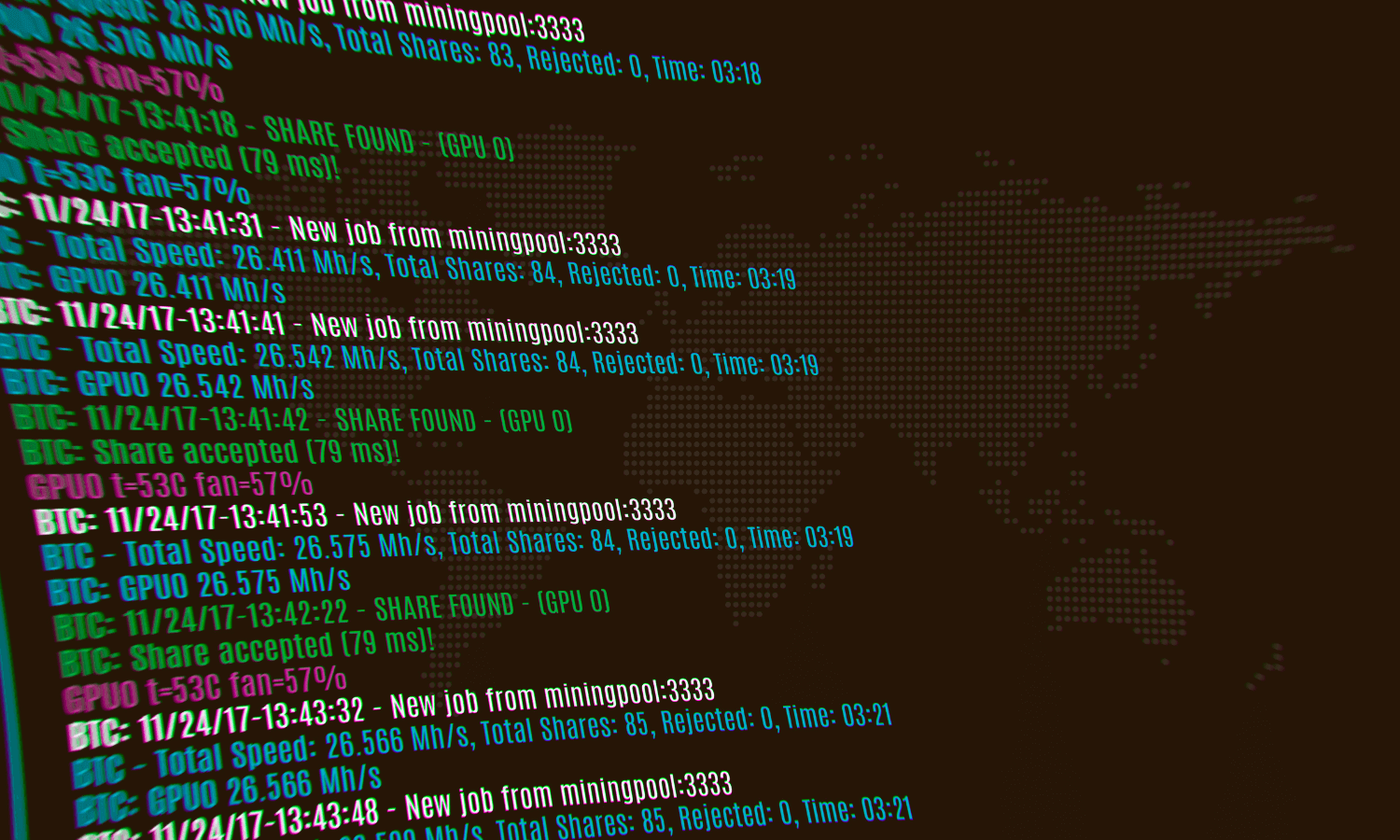What is a mining pool?
Mining pools are groups of miners who work together and share the rewards generated from mining cryptocurrency. The cryptocurrency miner is responsible for updating the blockchain with each transaction made by crypto.
Those who wish to mine cryptocurrency independently with their mining equipment or they join a mining pool that combines their mining resources with the resources of other pool miners for enhanced results.
How Mining Pools Work
Mining pools allow participants to pool their processing power to search for a block. As a reward for these efforts, the pool typically receives cryptocurrency.
In most cases, rewards are divided among the individuals who contributed by calculating their proportion of processing power and work as a percentage of the overall group. Miners can be required to submit proof of work in some cases.
Cryptocurrency miners have the choice of either going solo with their dedicated devices or joining a mining pool, which adds more hashing power to their hashing output through the addition of multiple devices and miners. When six mining devices each output 335 megahashes per second (MH/s), a combined mining power of 2 gigahashes can be generated, leading to faster processing of the hash function.
How to select a mining pool?
On the web, you can find a wide range of mining pools. They are located in every country, but the majority are located in China. A greater number of pools are based in countries with cheaper energy costs (so that the operating costs of the mining operation can be reduced).
There are several factors to consider when selecting a pool, such as what is the reward method; any withdrawal fees; how often are blocks mined; and how easy is it to withdraw funds.
Common methods of mining pool reward
Pay-per-Share (PPS)
This reward method offers an immediate, guaranteed payout to miners who have contributed to the mining effort. Each miner can withdraw his or her payout immediately from a pool’s existing balance. It allows for the least variance possible in payment for miners, which is the main advantage of this method. (Another benefit to miners is that the pool operator assumes the risk)
Proportional
Mining shares are distributed according to the contribution each miner makes. A share of a block’s reward goes to each miner based on the number of shares they own.
Pay-per-last-N-shares (PPLNS)
As with proportionality, the PPLNS method also uses N last shares as the basis of calculating the miner’s reward, rather than all shares in the last round. In most cases, the number of shares submitted during a round (which is the time it takes to find 1 block) is determined by luck. PPLNS is based on a fixed number of shares that are not subject to the round boundaries, so the minion gets more profit if the round was short, and vice versa.
Geometric
Using Geometric, shares are scored according to the age of their shares. Block rewards are distributed based on participants’ scores. New shares are granted the same score relative to existing shares and future shares. As a result, mining early or late in the round is not advantageous. The goal is to prevent miners from jumping from one pool to another to find a time to join that’s profitable.
Multipool Mining
In general, the profitability of mining will differ across different cryptocurrencies fairly quickly based on some factors, including the cryptocurrency’s value, how many miners participate in the mining effort, and how fast the block is mined. By evaluating and calculating the most profitable coin at the moment, a multipool will change between different currencies.
Mining pools: advantages and disadvantages?
Miners can benefit from mining pools because they offer a more scalable method of participating in crypto mining. Mining rigs or electricity are not more expensive due to the shared computing power, which will achieve higher success rates.
Mining pools generate rewards that are shared, which is a downside. Thus, mining rewards are reduced. On the other hand, pool mining is a more profitable venture in the long term than solo mining.
Another concern regarding mining pools is the potential centralization of the industry as a result of the rise of a small number of large pools. This group of mining pools can disproportionately affect the governance of crypto networks.
Pool mining is, at its core, an integral part of the crypto mining industry. It creates a conducive environment in which individual miners can make a profit while competing with large mining operations. There is no doubt that pool mining will remain relevant in the crypto industry as a result of its architecture and the advantages that small miners can gain from them.




Spot on with this write-up, I absolutely feel this amazing site needs far
more attention. I’ll probably be returning to read through more, thanks for the information!